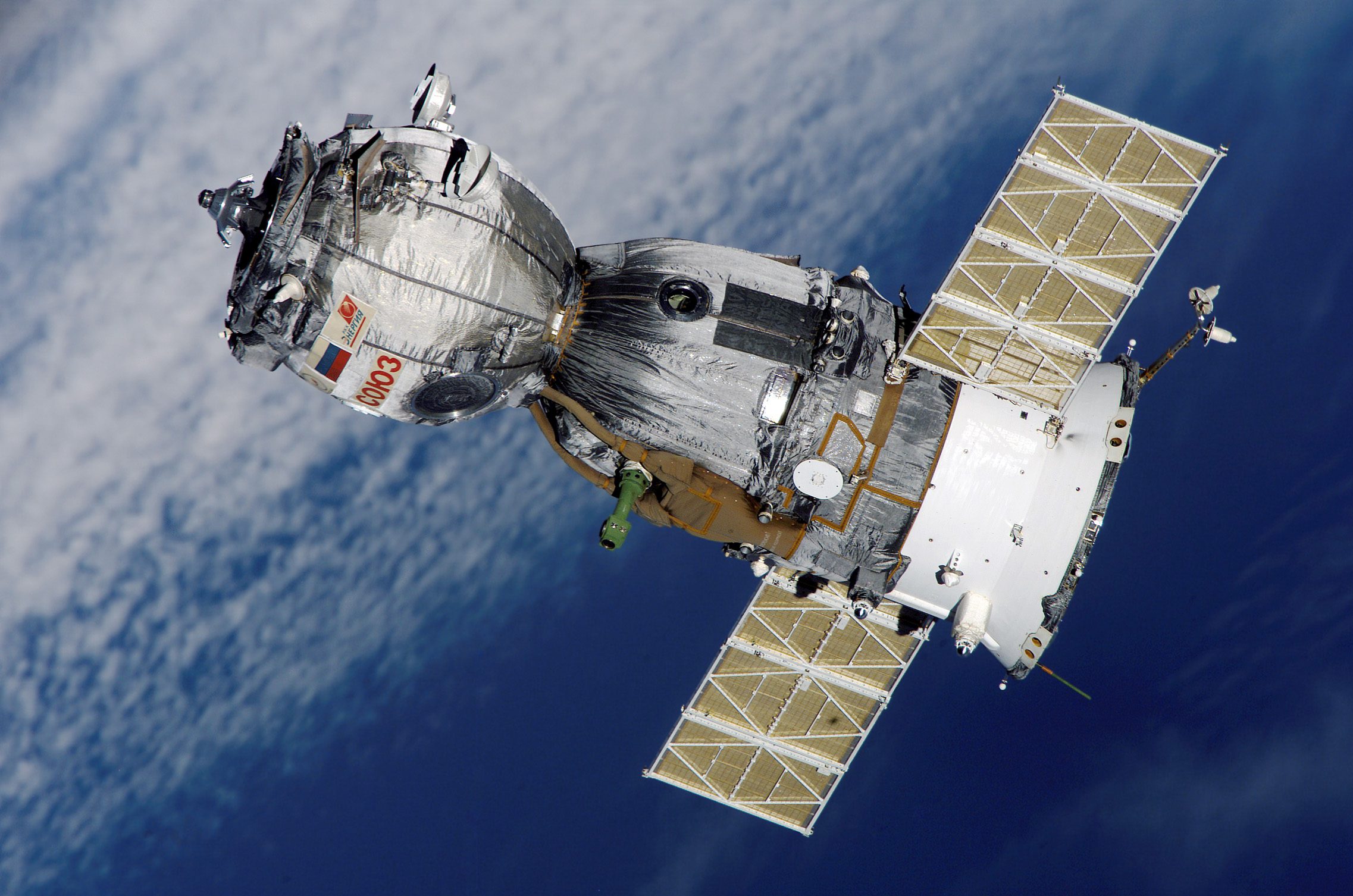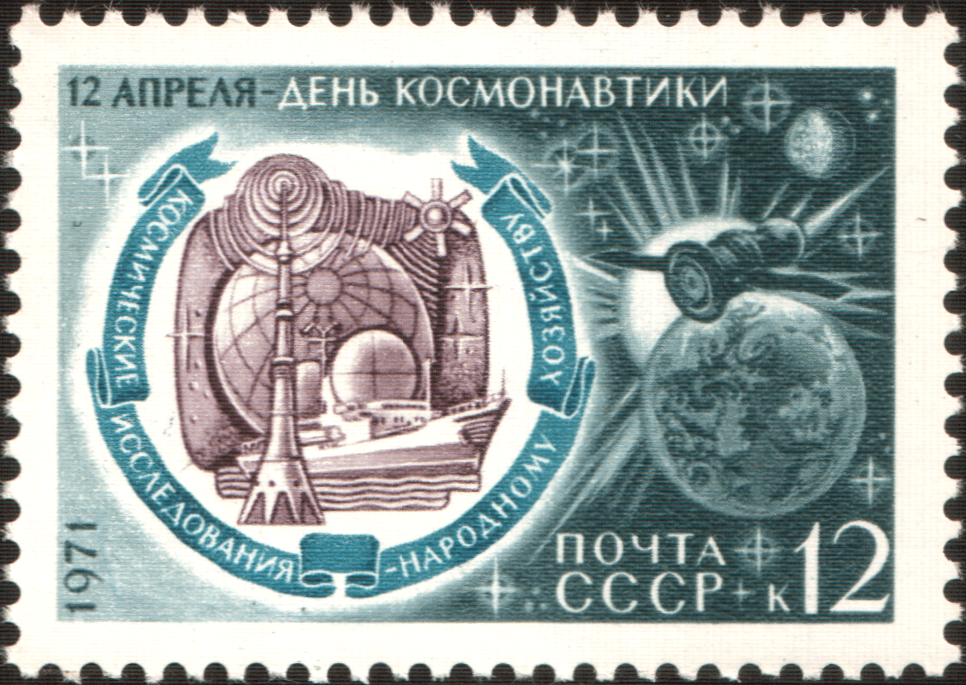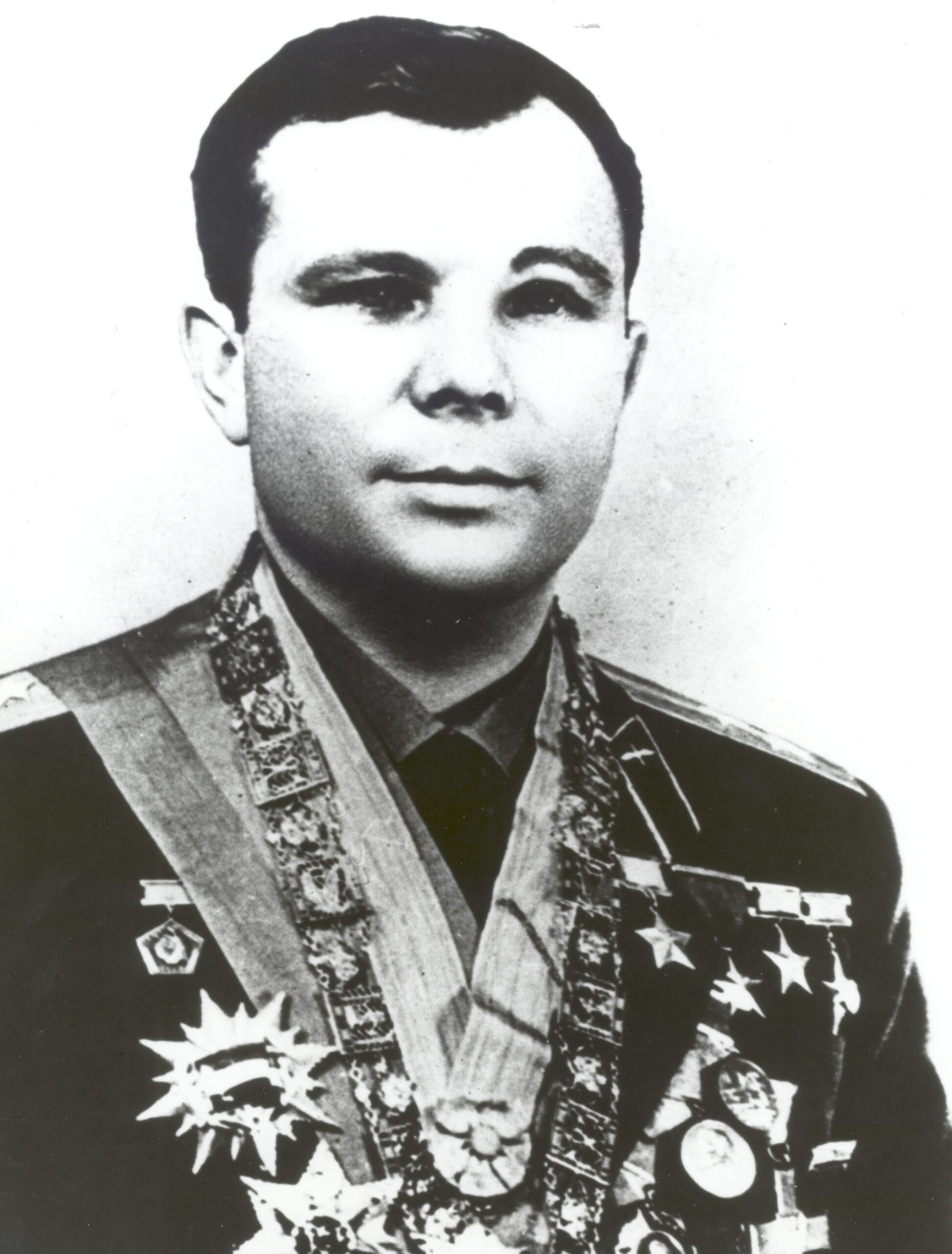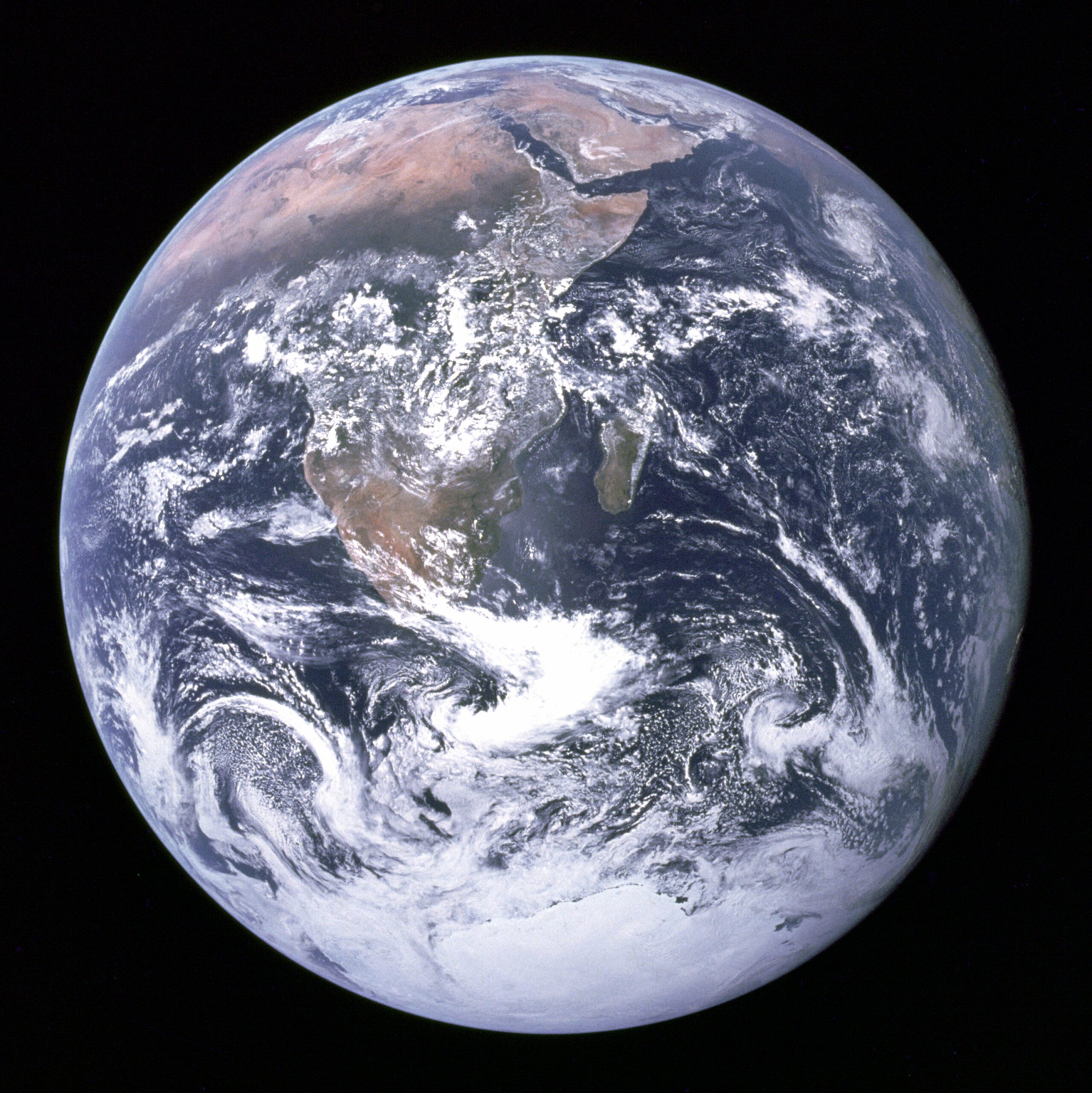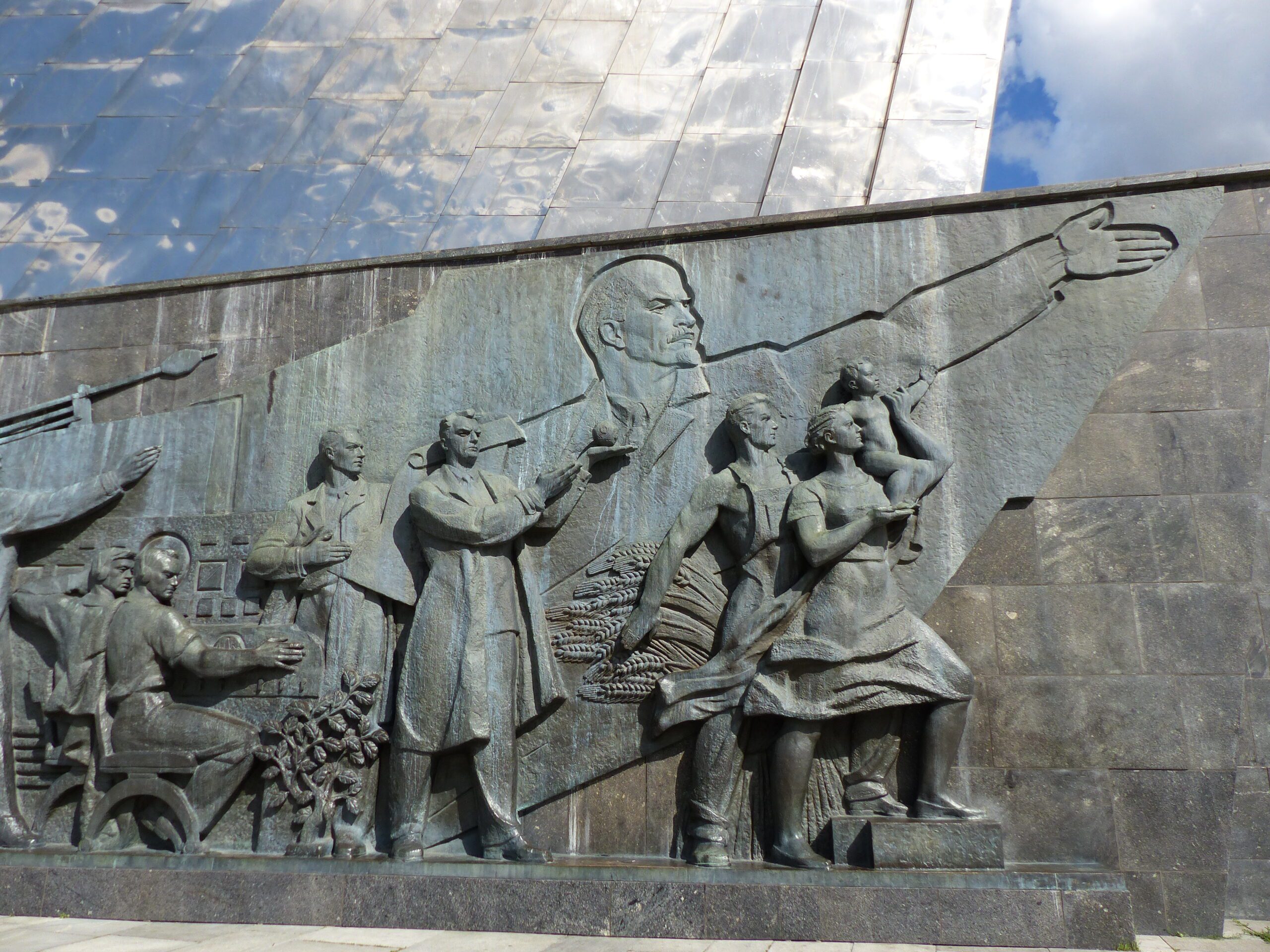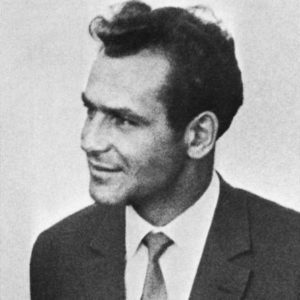
When he awoke to become the first man to have slept in space, Gherman Titov found his arm floating up and away from his body. Upon noticing this strange but expected behavior, he, very reasonably, strapped down his roving appendage and returned to sleep.
Titov would have understood well the physics of the loss of gravity and its pull on his bones. So while the actual fact that his arm might be floating away from his body during sleep would not have alarmed him, the sensation woke him. His body understood, even as it dreamed, that despite what dreams he may or may not have had of flying and returning to Earth, his natural inexorable motion was down, not up.
His arm did not have far to move. The sharik or “little sphere” that Cosmonaut Titov occupied on the Vostok 2 shares a strong resemblance to a ball gun turret that would have hung off the bottom of a WWII plane—though more metal, less glass. Through the small porthole of glass in the globe orbiting the globe, Titov took the first picture of Earth taken by a man in space.
*
In the picture, we see a planet bisected by darkness. Slightly more than half of the frame contains what is now the familiar image of Earth from space, slightly less than half the frame contains blackness, stars. In an illusion fashioned by the forced roundness of the image due to the circular shape of the window from which it was captured, it looks as if the sphere of the planet is half cloudy day, half cloudless night.
It is, of course, actually a picture of the curve of Earth pinned on the backdrop of the same endless space that the photographer was sharing when the image was captured. When I first looked at the photograph, I couldn’t quite grasp the perspective. I was confused by the unexpected collision of Earth and not-Earth, space and not space. I couldn’t quite picture the circle of the window that the camera was pressed up against, how the framing provided the expected geometry of the planet.
*
On April 10 of 1961, two days before the launch of the first Vostok mission (Vostok 1), Gherman Titov reenacted for a camera his response to the news that he had not been selected to become the first man in space. The honor would, instead, go to Yuri Gagarin. For the cameras, for his country, he tempered his response and attempted good cheer for his friend. But with only a day’s knowledge that he wasn’t chosen, Titov could do little but look at the table in front of him, head down. In public reports, journalists claim that he reacts with enthusiasm, moving to hug and kiss his rival and training partner.1 The image of a united front far more important for the government to relay than the human story of disappointed dreams and ambition.
Despite this, Titov’s reaction couldn’t quite be contained. It wasn’t his intention to become the third person in space, the second to orbit the planet. He wanted to be the first. Of course he did. He knew that someday he would either be remembered the first man to go to space or become, as the New York Times would call him in his obituary in 2000, the man who was almost the first man to go to space.
It was close and he knew it. He lived with it as he walked just behind Yuri Gagarin in the days leading up to the April launch of Vostok 1. Along with Gagarin, Titov was one of the twenty men that had been chosen out of two hundred candidates to train for the opportunity to become the first man in space. The men were all members of the Soviet Air Force. Six would be selected and then two would be the clear contenders—Titov and Gagarin were both senior lieutenants in the Russian Air Force.
Gagarin, 25; Titov, 24.
*
The 10,430 pounds of Vostok 2 rocketed from Earth on August 6, 1961 at 6:00 UTC. Titov, strapped into his turret, was pushed off the planet from the Baikonur Cosmodrome in Kazakhstan on a rocket thrust of 800,000 pounds.2
Perhaps as he heard a countdown, heard the rocket ignite, he thought of ten months earlier—of the hundred people who had been killed in a launch pad accident at the same cosmodrome when engines of a prototype ICBM accidentally fired as a large number of workers (and many spectators who shouldn’t have been present at all) prepared the rocket for test flight. Second-stage engines ignited. Some were immediately incinerated. Some burned to death in a less immediate fashion. Some died from the toxicity of Devils Venom—the name given to that specific combination of nitric acid and hydrazine.
Maybe Titov thought of Laika who was said to have spent six days in space—the stray mongrel, a Moscow native, rotating, happily eating nutrient rich space paste.
Perhaps he thought, like the rest of the world, that Laika had lasted almost a week in space until self-euthanizing with a specially prepared poisoned meal of doggy space goop. Perhaps he didn’t know that she’d only survived a few hours before she too burned—dying in an overheated cabin. Perhaps he also believed, like the rest of the world believed, that those hundred lives lost ten months earlier were the result of a plane crash and not a program failure.
*
I’d not heard of Gherman Titov until recently. Certainly I’d heard of Yuri Gagarin; it is something, after all, to have gone first. When I opened up a vintage stamp book that had, literally, hundreds of stamps, I might have paused at any one. There were so many faces, so many images, animals, machine, flags. There were images of battles and the heroes of them (at least the winning ones); there were images that try to capture whole revolutions of countries, of thought, of industry. We commemorate on our postage the things that are beautiful, the things that are inspiring, the things that are hard and the people who accomplished them.
I didn’t know that a commemoration of Gherman Titov’s Vostok mission was buried somewhere in the pages held between my hands. The stamp collection compiled by a woman that I’d never met, who lived her life in England, contained so many histories, so many moments worthy of examination.
When I came across the Vostok 2 stamp it had already unmoored itself from the page. It fluttered loose from a flip and I felt a momentary regret that I’d, in some way, ruined the collection.
The Vostok 2 spacecraft looked like what it was, a relic of the space race—an antennaed insect. Thanks to the artist’s rendering, it looks much more streamlined and sleek on the stamp than it ever was in reality. The bulbous turret is gone in favor of a lipstick tube-like shape. The image is missing the ring of balloons immediately under the turret that contained the oxygen. On the stamp, the sky is the color of new denim, Earth is a pale pink and, as the craft passes within the frame of the stamp, a single circular window is rotated to stare out at us. I can only imagine Titov’s camera pressed to the window. Imagine Titov’s body in his sleep. I can only imagine him in the frame of this stamp as neither his name nor his image appear anywhere on it.
Because I was curious about the stamp and then the image, I learned about Titov, about this not-quite-forgotten man. His story is more than just a story about space, but also a story about history and how it moves. How time and space bend, burn, warp, and ignore.
*
Before it was Gherman Titov’s turn, Yuri Gagarin had already become the first man in space and the first man to orbit the planet, spending less than a total of two hours out of our atmosphere. Then, American Alan Shepard was flung upward but only became suborbital, spending total of fifteen minutes in space before falling back down to Earth.
Titov is the second Russian in space, the third man in space. Titov is, however, the first to vomit in space, having a type of motion sickness that will be called “space sickness.” He is the first to sleep in space and the first to dream there. He is the first to take a picture in space. The first to film the planet Earth. He eats in space and then becomes the first to make use of the bathroom in space.
While he orbited Earth, on that one long day, he couldn’t have known that it wouldn’t happen again. He had made it up to space, but it would be a one-time shot. Others would leave and return, but he never would again.
*
On a cloudy, cold day in 1968, wind would have been whipping snow and rain through the air while Aleksey Leonov (the first man to walk in space), waited at an airfield not far from Moscow for his parachute training to be called off. The weather was horrible. Somewhere in the sky shortly before 4 p.m., Yuri Gagarin flew a MiG-15 fighter jet with flight instructor Vladimir Seryogin. While waiting for word that his own training had been canceled, Leonov heard a super-sonic noise and then, shortly after that, he said, an explosion.
For years, after this moment, it would be said that it was a fluke, an accident that had happened to avoid a school of geese or possibly a hot air balloon. It would be said, while returning to Chkalovsky Airfield, in trying to avoid an accident, Gagarin entered a tailspin and ran his plane into the ground.3 At his last check-in, fifty-five seconds before the crash, Gagarin and Seryogin were 4,200 feet in the air and descending.
In 2013, more than forty years after the accident, it was revealed that it wasn’t balloons or birds that brought down Gagarin but another test flight. This wasn’t something that officials at the time wanted to admit to, that something could go wrong so close to Moscow. A larger, heavier plane, a SU-15, passed too close to Gagarin’s MiG-15, causing his plane flip over from the vortex of air created by SU’s “backwash.” The plane was forced into a deep, spiraling tailspin and drove itself into the ground at 466 miles per hour.4 Neither Gagarin nor his instructor co-pilot survived. The next day, when Gagarin’s remains were finally found, Leonov identified the body by a mole on the man’s neck that he had only noticed three days prior. The two men on the plane were both cremated and interred in a wall on Red Square. The Chkalovsky Airfield is now home to the Yuri Gagarin Cosmonaut Training Center.
*
Because Gagarin died in the 1968 crash, Titov became a living relic—a piece of history and proof of Soviet accomplishment. After Gagarin’s death, Titov was pulled from his position on the Spiral spaceplane project. To protect and preserve the life of a Soviet cosmonaut hero, Titov was denied permission to go back to space.
During his Vostok mission, Titov spent just over a day in orbit. The time he spent was not originally designed as a test to examine the effect of a day in space on the human body. The choice of seventeen orbits and twenty-five hours in space was made because of the westward drift of his motion. Within three orbits he could hit the target landing site; after eight and but between thirteen, Titov would land in the ocean; after thirteen he would be in Eastern Russia with hard soil, taiga, and trees.
The time that he was allowed in space, because of the politics of borders and the curiosity of biologists, gave him the opportunity to sleep, to dream, to film, take pictures, to look. Upon his return he would explain, to a reporter curious about what he’d seen during his day up there:
Some say God is living there [in space]. I was looking around very attentively, but I did not see anyone there. I did not detect either angels or gods… I don’t believe in God. I believe in man—his strength, his possibilities, his reason.
A comment that, in the years to come, would frequently be attributed to Gagarin.
*
Titov would return to Earth, making a show for farmers in Saratov Oblast, a land bisected by the Volga River. The witnesses, one a Brigadier in the Tractor Brigade, were not alarmed. They knew of their cosmonaut, of his mission to navigate the space between the stars and the globe. The work in the field had been progressing smoothly that day. The field was soft, the grain just harvested. They saw an object far off in the sky and then closer. Our cosmonaut, I shouted, and all dashed to the spot.5 Running, at 10 a.m., August 7, 1961, to meet their newly fallen hero.
His face and his mission would appear on many stamps late in 1961 and 1962. Though his face is not in the stamp in my collection, he is there on stamps in Vietnam, in East Germany, in Hungary, in Cuba, China, Czechoslovakia, Romania, and Russia. In the images, then and forever he is floating above our heads. He is over here, he is passing over DC and then he is over Europe, he says hello. It is his sixth orbit; he is overwhelmed by the sight of the planet beneath him. He is traveling at an approximate 17,500 miles an hour at a height of 159 miles.6 He is a man temporarily divorced from mankind. He is looking over Africa, which he describes as looking like a leopard from space. He, filled with emotion that is difficult for a person who has never felt the absence of atmosphere to comprehend, tells the men that he is passing over like a comet, like the angels he doesn’t believe in: I am Eagle. I am Eagle.7
*
At home, on Earth, in Kazakhstan, Grigori Nelyubov, the man who had come in third in the fight between the Titov and Gagarin to be first, waits out the twenty-five hours at the cosmodrome. He had paced behind Titov as Titov paced behind Gagarin, his hope of achieving space an even more thwarted and distant desire than Titov’s during the Vostok 1. Nelyubov acts as second backup for Vostok 1 and then moves up to become first backup for Vostok 2.
Almost two years to the day of the Gagarin’s historic flight, Nelyubov was discharged from the cosmonaut program for drunkenness and disorderly conduct. He would never fly into space, never orbit the planet. One day in February 1966, Nelyubov walked off a platform and in front of a train at a station in eastern Russia. His act, his history, cannot mar the space program, cannot disturb its image, and so his image is removed from the group photograph of the Sochi Six. He is edited out of history.
*
At sixty-five, Titov, having spent the balance of his life knowing that he’d never return to space, died of carbon monoxide poisoning while sitting in the sauna at his home in Moscow. After learning he’d be unable to be a test pilot, he rose to the rank of Colonel General, and became the deputy director of the Office for Space Facilities, overseeing the construction of launch vehicles. He also joined the Duma as the representative from the city Kolummna before retiring from public life in 1999.8 Titov was laid to rest in Moscow’s famous Novodevichy Cemetary. It is an honor to buried there, second only to the honor of being interred in the necropolis wall at Red Square.9 His legacy, though, is that one day orbiting the planet, the twenty-five hours he spent at the age of twenty-five in space. At the time of his death, he is referred to as “Russia’s greatest living space legend.” What does he become once he is no longer living?
Gherman Titov occupies an emotional historical intersection of presence and absence. He was celebrated, preserved, and then his story was subsumed by the better-known narrative, the brighter star, in the space of less than a lifetime. Titov gets conflated with Gagarin, his words become the other man’s, his firsts get lost in a period of so many. I happened upon Titov’s story because of a small picture that seemed to capture a time I knew little about; it, too, was one amongst many in the stamp book that I found mixed in with vintage yearbooks on a shelf in an antique store in southern Florida. Shelves with more pages of more pictures containing lives missing the stories that might fill a page, shape a monument.
*
Moscow, Titov’s home at the time of his death, is also home to the Monument to the Conquerors of Space. The monument is three hundred and fifty feet tall and made of titanium, swooping upward at a seventy-seven degree incline, seeming to mimic the departure of the rocket that sits at its apex. The planning for the monument started before Titov or Gagarin was ever selected to be part of the first group of cosmonauts, before anyone knew who might be first, who might be second.
South of the monument is Cosmonauts Alley, a wide promenade decorated with the busts of cosmonauts. Gagarin’s face is there as the first man in space, Valentina Tereshkova as the first woman. Pavel Belyayev, commander of Voskhod 2, whose mission accomplished the first spacewalk, and Alexei Leonov, who performed the first spacewalk, are both there. Vladimir Komarov, the first man to go to space more than once and the first to die during a mission, earned a spot. So did the men who designed the rockets, and the man who theorized the math, and the man who is considered to be a founder of aeronautics and rocketry. Titov is not represented.
The poem is inscribed at the base of the Monument to the Conquerors of Space:
And thus rewarded are our toils,
That having vanquished lawlessness and dark,
We have forged great flaming wings
For our
Nation
And this age of ours!
***
1. http://photoblog.nbcnews.com/_news/2011/08/04/7249795-gherman-titov-russias-forgotten-spaceman↩
2. “The Space Race: Who’s Ahead,” Popular Science, June 1965, Vol. 186, No. 6, pg. 70.↩
3. “Death of Yury Gagarin demystified 40 years on,” RT, 14 June, 2013.↩
4. “Death of Yury Gagarin demystified 40 years on,” RT, 14 June, 2013.↩
5. Benoit, Brian. “A Day at the (Space) Races: Gherman Titov and Vostok 2 Raise the Stakes of Manned Space Flight,” Readex. ↩
6. “Gherman Titov,” The Telegraph, 23 September 2000.↩
7. Hall, Rex and Shayler, David. The Rocket Men: Vostok and Voskhod.↩
8. Burgess, Colin and Hall, Rex. The First Soviet Cosmonaut Team: Their Lives and Legacies, pg. 359.↩
9. Burgess, Colin and Hall, Rex. The First Soviet Cosmonaut Team: Their Lives and Legacies, pg. 359.↩
***
Image credits: feature image, image 1, image 2, image 3, image 4, image 5.

